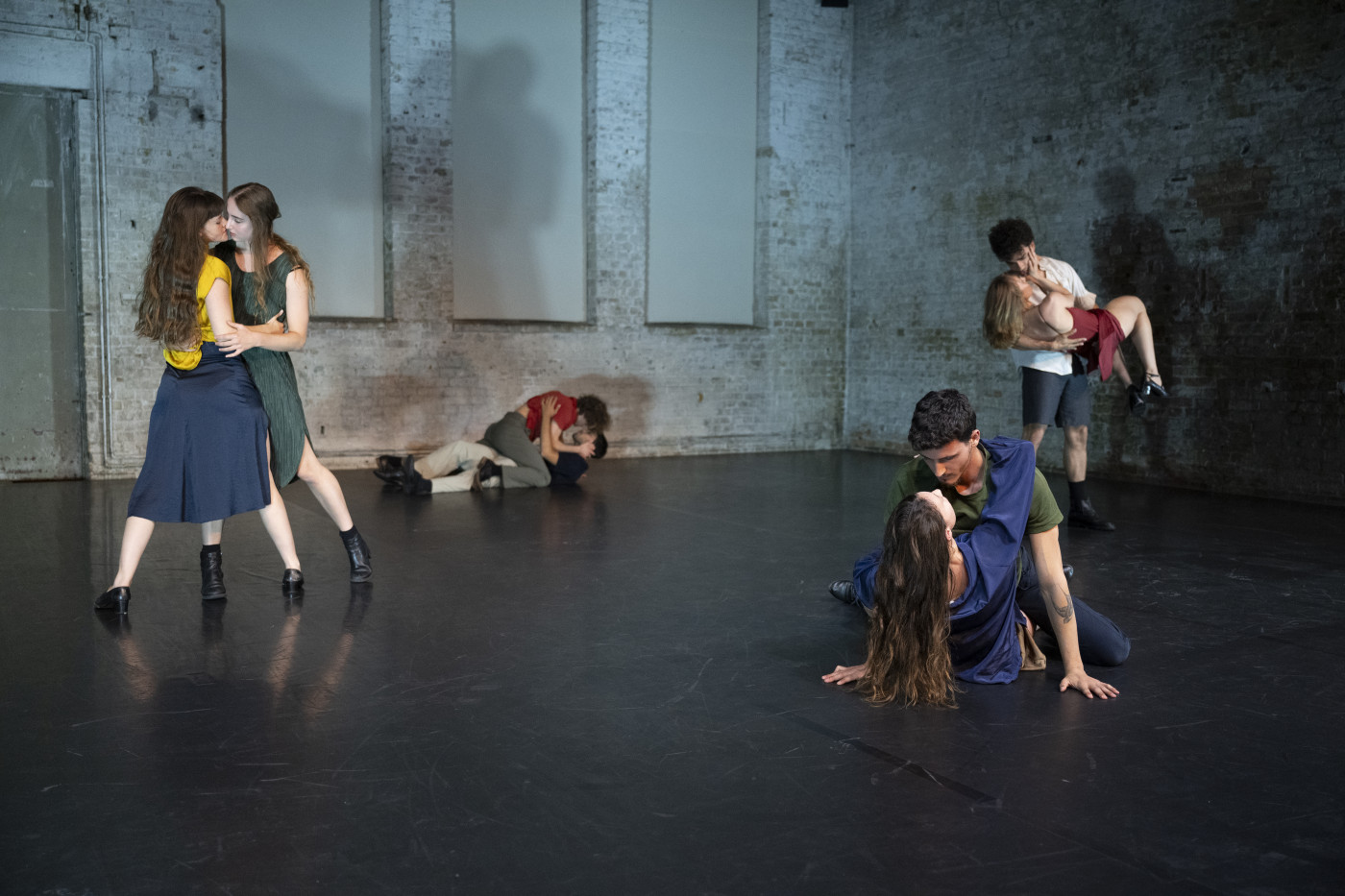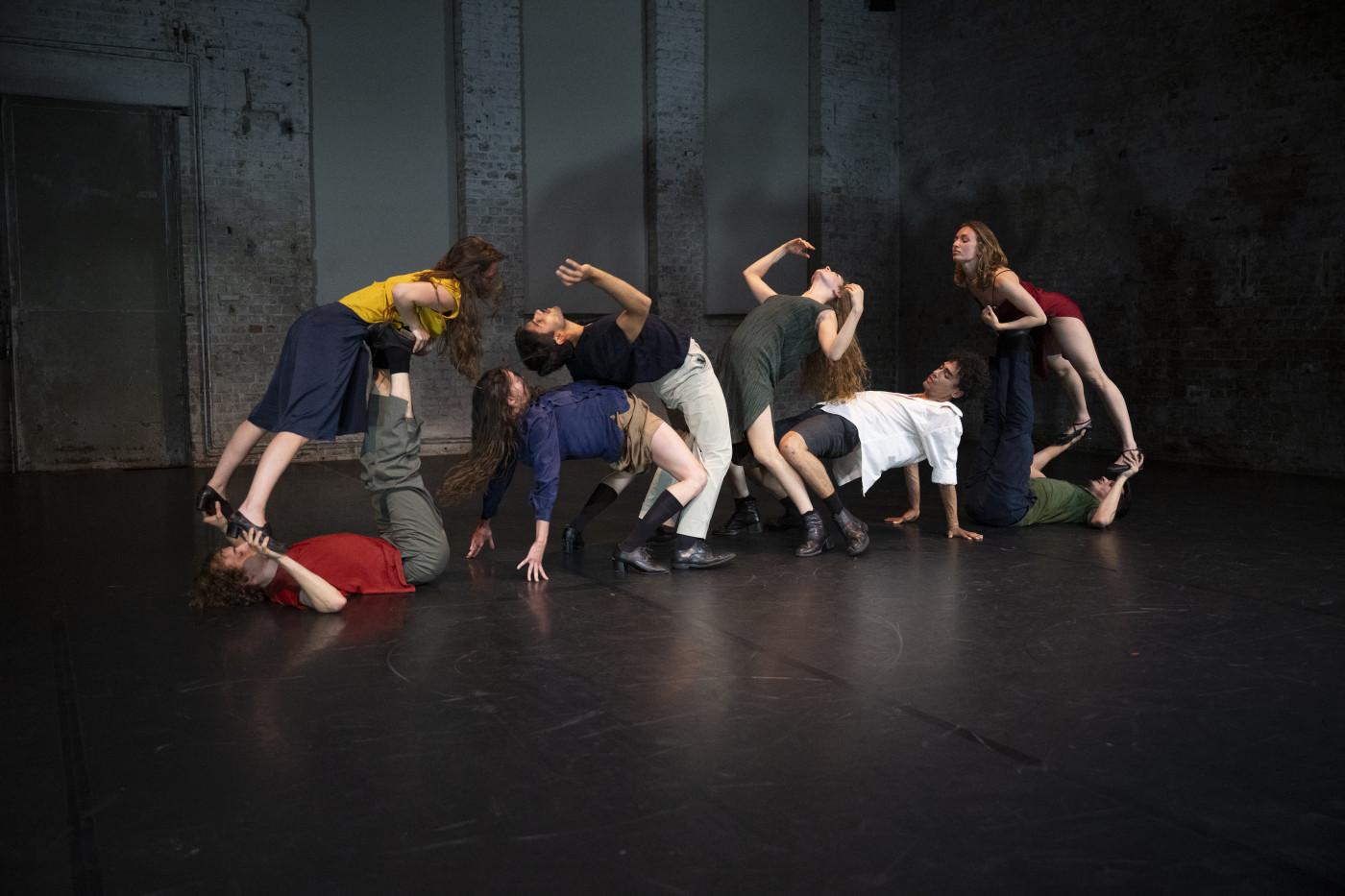
A Torn Present or Dancing in a State of Emergency
The walls stand
speechless and cold
the weathervanes
rattle in the wind.
(Friedrich Hölderlin: Half of Life)
How do we engage with a present in which reality increasingly depends on perspective—filtered, manipulated, fragmented, overlaid with images, narratives, and interests? How can we continue to make art when everything around us appears to be falling apart? How can we navigate the complexity of our world without succumbing to clichés or simplistic slogans? And within this very complexity, another question emerges: What does it mean to perform as an Israeli artist today—both in Germany and in Israel?
In this politically charged present, we enter the stage hall of DOCK ART during the MASH Dance Berlin Festival, which has taken place annually at DOCK ART since 2017 in close collaboration with the Machol Shalem Dance House in Jerusalem.
On stage, we see two dancers being carried in—motionless, like mannequins. Their bodies are carefully arranged and wrapped, layer by layer, in transparent film until they are completely intertwined: arm in arm, cheek to cheek, frozen into a statue. Not a twitch, not a single movement. A moment of unease: can they even breathe?
As the plastic film is slowly torn open, the bodies collapse lifelessly into themselves. They sink to the ground, are lifted up, dropped again—a sluggish struggle with gravity. Clothes are exchanged, the line between puppet and person begins to blur. Two bodies, seemingly devoid of will, manipulated and controlled by two others.
The dynamics on stage grow increasingly complex: the eight dancers become entangled in ever-shifting encounters. Closeness is sought, tested—and rejected again. Connections are made, undone, renegotiated. Trust is cautiously explored, granted, and withdrawn. A wide range of approaches and rejections are played out—yet the movements repeatedly fall back into gendered clichés. Calvin Klein for the boys. Victoria’s Secret for the girls. Everything seems meticulously staged, perfectly synchronised. What we’re witnessing are not merely bodies in motion, but images shaped by media-driven norms — a choreography of appearance, in which life itself has long since been frozen.
Roni Chadash’s group choreography perFORMing LOVE is presented on the second evening of MASH Dance Berlin. Instead of a detailed program note, the piece is introduced with a single quote—an invisible thread that runs throughout the performance:
„But certainly for the present age, which prefers the sign to the thing signified, the copy to the original, representation to reality, the appearance to the essence…illusion only is sacred, truth profane.”
In The Essence of Christianity (1841), German philosopher Ludwig Feuerbach formulated a fundamental critique of religion—more precisely, of humanity’s tendency to revere an image of a transcendent God rather than engage with the physical and sensual reality of human existence. Religion, he argued, is an illusion: a construct that alienates people from their true being. Feuerbach’s position is explicitly critical of ideology. He exposes how images, ideas, and belief systems can obscure and suppress reality—and in doing so, serve to legitimize the status quo.
His critique still applies today: in a world where people no longer participate directly in reality but consume prepackaged versions of it—through advertising, television, social media, or spectacularly staged events. Here, alienation means heteronomy: a turning away from what is essential, in favor of images and substitutes that distance us from ourselves and from one another—soothing, numbing, and ultimately controlling us.
This ideology-critical thread can also be drawn to Yasmeen Godder's Practicing Empathy #3 - the third part of her series on empathy developed since 2019 and presented on the third evening of the festival. Godder begins with a clear warning against losing touch with reality. She asks how empathy—physically, emotionally, socially—can be made tangible, and how it might open up the possibility of genuine encounters between strangers. Practicing Empathy #3 can thus be seen as a countermodel to an alienated, spectacle-driven society. The piece seeks ways to explore empathy as a behavior beyond religious or political illusions and their representations — a behavior that goes beyond the friend-enemy dichotomy.
I remember seeing Practicing Empathy 1, 2, and 3 during the COVID pandemic—at the height of another global crisis, when closeness and physical contact had become nearly impossible. At the time, the works felt like a utopian, yearning alternative to the prevailing reality of hygiene protocols, social distancing, isolation, and closed borders.
And today? Today, amid the next wave of major crises—such as the war in Gaza and in Ukraine—empathy feels more urgent than ever, yet at the same time more out of reach. In this context, Yasmeen Godder’s celebration of her presence and the creation of a “personal safe space”—symbolised on stage by a cocoon of rough, resilient fibers—seems less subversive, but almost out of place, escapist. This is despite the fact that Godder herself emphasises how aware she is of the political charge and current contextualisation, and how she carries this awareness within her during each performance.
In a world increasingly divided into hostile camps, where human suffering is filtered, instrumentalised, or suppressed, the question resurfaces with renewed urgency: How can empathy be practiced in the midst of pain, violence, and political helplessness? How can we act—without dehumanising, relativising, or shutting down? How to continue communicating with each other?
It is precisely within this space of tension that Mica Kupfer’s solo Walking on Two unfolds. Her piece resembles a quiet, poetic and abstract attempt to navigate one's way through a highly polarized world. Through precise, pared-down movements, she explores the potentiality of physical presence and transformation. Subtle shifts in posture, rhythm, and dynamics create ever-changing relationships between parts of the body—the body continuously reassembles, deforms, reshapes itself.
Her choreography feels like a careful search for form and expression amid uncertainty and confusion – a search for a communication beyond prefabricated language and automatic reaction. It becomes an attempt to respond to the loud, politically overdetermined world outside – not as an act of withdrawal, but as an effort to generate resonance at all under radically altered, violent conditions. The stage thus becomes a space where ambivalence is welcomed, where contradictions can be endured and articulated through movement. What matters here is not a clear-cut message, but the act of questioning — tentative, searching, and open-ended.
Jette Büchsenschütz, Berlin, 25/08/2025

By playing this video, you accept Vimeo´s privacy policy. Read more in our privacy policy and at https://vimeo.com/privacy.
